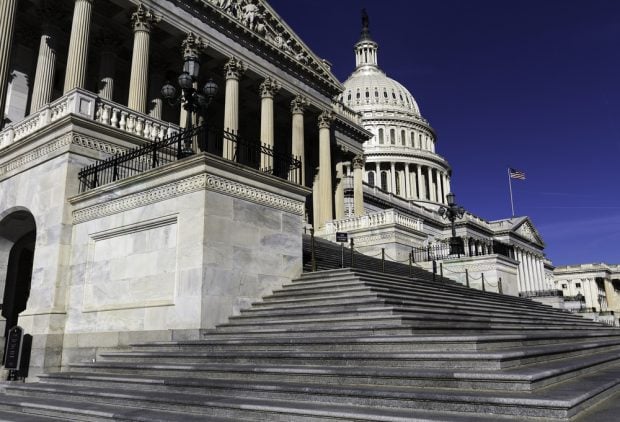Credit union executives have frequently testified incongressional hearings about regulatory impacts, but how do thoseexecutives get there? And what's it like to testify? CUTimes asked three professionals how it works and how othercredit union execs can do it too.
|1. Industry involvement ups your chances of acongressional invite. Writing comment letters gets yourname out there, as do relationships with industry groups, accordingto NAFCU vice president of Legislative Affairs Brad Thaler.
|“Sometimes members of Congress or committee chairmen will giveus criteria that they're looking for someone from this area,someone that fits a certain profile, certain size of institution,certain type of institution,” he said. “Sometimes a chairman willsay they want someone from his or her home state, or they'relooking for an institution that has experienced this problem orthis issue or was in this situation.”
|That's when the calls start going out to people like StateDepartment Federal Credit Union President/CEO Jan Roche, who testified before the House Small Business Committeein October regarding EMV, and Timberland Federal Credit UnionPresident/CEO Carrie Wood, who testified before a Senate Subcommittee onFinancial Institutions and Consumer Protection also in Octoberabout regulations for rural financial institutions.
|“NAFCU got asked to provide a witness,” Roche explained. “NAFCUknew that our credit union has had EMV credit cards on the streets– it's been about four years now – and that we were well on our wayto reissuing debit cards. They asked our credit union to testifybecause they knew I had some expertise in the area.”
|The Alexandria, Va.-based State Department FCU has $1.7 billionin assets and 71,000 members.
|Wood said her invite came when the Pennsylvania Credit UnionAssociation heard Senator Pat Toomey's (R-Penn.) office wantedwitnesses and floated her name. The Dubois, Penn.-based TimberlandFCU has $59 million in assets and 9,800 members.
|2. Be prepared to drop everything. “One thingabout testifying is sometimes there are times we can give a fewweeks' notice and sometimes it's a few days' notice,” Thaler said.Often it's a week, he said.
|“Logistically there are challenges of travel and getting someonein here that works on their schedule … asking them to basicallytake off for a few days between traveling and coming here to prepand testifying and traveling back home is not the easiest thing inthe world,” he added.
|3. It's a team effort. The organization thatgot you a congressional invite will likely help craft yourtestimony and help you handle the committee's questions.
|“A testimony has broader policy issues and questions andinformation, but then we also try to get real-life examples fromthe institution that's testifying, and maybe even otherinstitutions,” Thaler explained. “Because one of the more effectivemeasures on Capitol Hill are thepersonal stories.”
|Hearings are often 90 minutes to two and a half hours long, andwitness panels typically include three to seven people, he noted.Often, each witness gets five minutes to read testimony and thenthe committee asks questions. Witnesses usually come to town a dayor two early to prepare. Roche, for example, spent the day beforeher hearing at NAFCU preparing for questions and practicing readingher testimony.
|4. You probably won't get grilled. “At first itwas a little intimidating,” Wood said of the questioning. “But thenlistening to their questions, they just really wanted to know myperspective and the panel's perspective in general – howwe deal with the regulatory burden on a day-to-day basis andwhat really happens when the rubber hits the road.”
|There's another reason things often stay cordial: Out ofdeference, committee members often avoid beating a witness up if heor she is from a committee member's district, Thaler said.
|5. You won't be alone. Thaler said his teamoften escorts witnesses everywhere.
|“Oftentimes we will go in and visit the chairman of thecommittee or the members of the committee before they testify sothey've met the folks,” he added.
|He or another staffer also usually sits right behind witnessesduring the hearing so he can hand them notes or discreetly givereminders, he said.
|6. You'll probably want to do it again.Testifying before Congress can be nerve-wracking, but both Wood andRoche said they're grateful for the chance to participate.
|“Your mind tries to focus on, 'Oh my goodness, I'm scared,'”Wood said. “But then you have to step back and go, 'You know, thisis a really cool experience.' Take it all in.”
Complete your profile to continue reading and get FREE access to CUTimes.com, part of your ALM digital membership.
Your access to unlimited CUTimes.com content isn’t changing.
Once you are an ALM digital member, you’ll receive:
- Critical CUTimes.com information including comprehensive product and service provider listings via the Marketplace Directory, CU Careers, resources from industry leaders, webcasts, and breaking news, analysis and more with our informative Newsletters.
- Exclusive discounts on ALM and CU Times events.
- Access to other award-winning ALM websites including Law.com and GlobeSt.com.
Already have an account? Sign In
© 2024 ALM Global, LLC, All Rights Reserved. Request academic re-use from www.copyright.com. All other uses, submit a request to [email protected]. For more information visit Asset & Logo Licensing.









